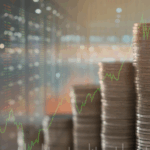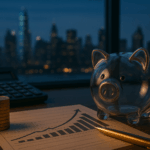Amidst the rapid evolution of the tech industry, the impact of PayPal (NASDAQ:PYPL)’s early team, known as the “PayPal Mafia,” continues to reverberate across Silicon Valley and beyond. Key figures from this group are not only synonymous with innovation but also with occasionally contentious public and political engagements. The ventures they created after leaving PayPal have shaped entire market segments, demonstrating their foresight and determination. Interestingly, many of these former colleagues have encountered public scrutiny, yet they have consistently maintained their prominence, further transforming industries with each strategic move.
A retrospective glance reveals that since PayPal’s acquisition by eBay in 2002 for $1.5 billion, a number of its former employees went on to establish storied corporations such as YouTube, SpaceX, and LinkedIn. These companies now stand as pillars of modern technology. Contrarily, some like Peter Thiel have faced criticism, for example, due to his financial support for the litigation against Gawker Media. Elon Musk’s takeover of Twitter, now rebranded as X, has also drawn mixed reactions. Despite these controversies, the contributions of these individuals to technology and business are undeniable.
How did Peter Thiel’s Ventures Diversify Post-PayPal?
After his departure from PayPal, Peter Thiel made significant strides in technology and politics. Co-founding Palantir Technologies, a key government contractor, he has expanded his influence greatly. Thiel’s role doesn’t stop at tech; he is also known for his active involvement in political arenas, underscoring his impactful presence beyond business.
“Palantir has become critical in analyzing complex data structures for governmental operations,” Thiel highlighted in his recent interview.
His affiliations extend to angel investing, with contributions to firms like Founders Fund, enriching numerous tech spaces.
What is Elon Musk Currently Focused On?
Elon Musk’s endeavors post-PayPal set new benchmarks in diverse sectors, including electric vehicles and space explorations with Tesla (NASDAQ:TSLA) and SpaceX respectively. His 2022 acquisition of Twitter for $44 billion, rebranding it as X, further broadened his influence. Musk’s engagement with A.I., rekindled through the founding of xAI, indicates his dedication to making A.I. systems more human-interpretable. His leadership transition from PayPal’s CEO left a footprint on future advancements, aligning pioneering technologists, who now shape the future of multiple industries.
“Exploration and innovation drive sustainable growth, a philosophy integrated within all my ventures,” Musk expressed.
Max Levchin’s participation as co-founder of Affirm marks continued success for PayPal’s original team. The “buy now, pay later” company revolutionized digital commerce, attracting millions of consumers. Levchin’s impacts, like those of Reid Hoffman with LinkedIn and other projects, underline the former PayPal team’s profound influence on business growth patterns worldwide. Their networking and strategic investments weave through tech and business landscapes, fostering modern development with resilience.
David Sacks’ transition from enterprise development to a governmental advisory role epitomizes the diversified success of the “PayPal Mafia.” Running Craft Ventures alongside managing A.I. and Crypto policies reveals the adaptability inherent to PayPal’s early team members. Each member’s pathway into different domains underscores an invaluable blend of technological innovation and political integration, influencing policies and driving constructive dialogues in numerous sectors.
Assessing these developments, it becomes clear that PayPal’s original team has achieved sustained influence fine-tuned through both collaboration and independent endeavors. They frequently navigate the intersection of technology, politics, and public policy. As these ventures mature, the complexities within their foundational frameworks continue to shape the landscape profoundly. Given their past trajectories, these transitions suggest pathways of significance for the next phases in industry and government interfaces.









